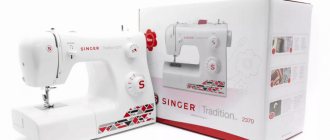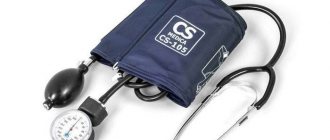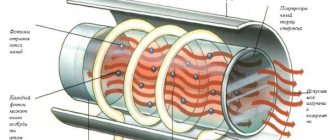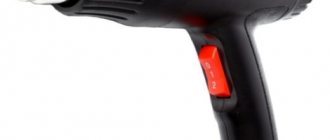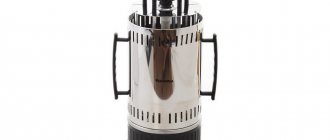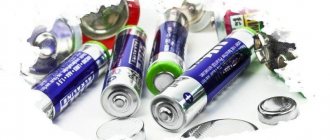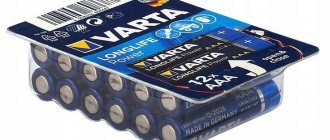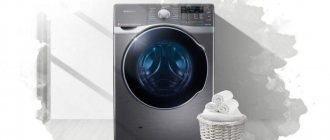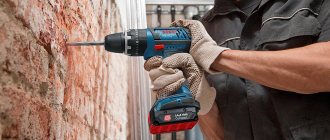Purpose of the device
Normal blood pressure in a healthy person is 120/80 mmHg. Art. Some people are characterized by lower or higher parameters, which is also a variant of the norm. However, a strong deviation from the indicated values indicates the development of dangerous diseases. To identify these disorders, it is worth using a special device - a tonometer.
This device should definitely be in the home medicine cabinet for people who suffer from hypertension. To prevent the development of a hypertensive crisis, such people should constantly monitor their blood pressure. Based on its results, the doctor selects adequate treatment.
The need to use a blood pressure monitor is not always associated with hypertension. After 50 years of age, blood pressure often increases due to poor general health. In such a situation, it is also necessary to measure blood pressure in order to provide timely assistance to the person.
Athletes often need a device to monitor their level of physical activity (modern devices allow you to measure not only blood pressure, but also pulse). In addition, the need for a tonometer is experienced by people who often face stressful situations or constant psycho-emotional stress.
People who have diabetes and hypotension should monitor their blood pressure parameters. It is also necessary to monitor such indicators during the period of bearing a child.
Important: If a person often experiences headaches, nausea, dizziness, or pain in the heart, this indicates a deviation of blood pressure readings from the norm, which is fraught with dangerous consequences.
The use of a tonometer allows you to identify disturbances in the functioning of the body. A timely call for an ambulance can save a person’s life.
Types of tonometers
The classification of such devices is based on the principle of operation. There are mechanical, automatic and semi-automatic devices. They are also classified according to the area of measurement. Based on this criterion, wrist and shoulder devices are distinguished. The latter are used more often due to the high accuracy of measurements.
Note: There are also devices for monitoring blood pressure on the finger, but their accuracy is not so high.
Mechanical tonometer
Many people are interested in what this type of blood pressure monitor consists of. The device includes elements such as a cuff, a phonendoscope, a bulb and a pressure gauge. The last element can be mercury or membrane. Mercury is considered more accurate.
In some models, the stethoscope is connected to a cuff. A mechanical tonometer has the most affordable price, but its use requires certain skills and good hearing. Sometimes people cannot take measurements correctly with such a device. The accuracy of the obtained values directly depends on the person’s skills.
Semi-automatic blood pressure monitor
The mechanism of operation of the device is based on the oscillometric technique. In this case, electronic processing of vibration occurs, which is formed in the cuff. This makes it possible to eliminate the human factor and reduce the risk of errors.
A semi-automatic device for measuring pressure involves manually pumping air. After which the electronic device records the parameters of blood pressure and heart rate (HR). According to the principle of operation, a semi-automatic device is the same as an automatic device.
Automatic blood pressure monitor
These devices are considered the most convenient. They make it possible to measure blood pressure without much effort. This is due to the fact that control of a modern automatic blood pressure monitor is simple.
To take measurements, put on the cuff, take a comfortable position and press the button. After some time, the results will appear on the monitor. The machine has a fairly low error. But if a person has arrhythmia, pressure will have to be measured several times.
The automatic blood pressure monitor is powered by batteries or rechargeable batteries. Some models include a network adapter. It allows you to use the device by connecting to the network.
24-hour monitoring tonometer
Such devices are required by people who need constant pressure monitoring. It is convenient to use them, since it is difficult to take measurements every half hour with a traditional device. The procedure is called “24-hour blood pressure monitoring.”
The tonometer for daily monitoring is designed in such a way that the cuff is put on the arm, and the device itself is attached to the belt. Such products are compact in size. During the day they take measurements every 15 minutes, at night every 30 minutes.
These devices allow you to determine the conditions under which pressure increases during the day. This makes it possible to take preventive measures in a timely manner.
Microlife^
The products of this Swiss company have gained great popularity in the CIS countries due to their high quality, durability and quite affordable prices.
Over the last period, the company has managed to create a developed service network, whose employees can quickly repair a tonometer by replacing a worn cuff, tube or other part.
The production of tonometers is the main activity of Microlife, but not the only one. For example, the company became famous as the first developer of thermometers that do not contain mercury.
You can buy a Microlife BP A100 Plus tonometer (automatic model with the ability to operate from the network, a bag is included) for 3 thousand rubles.
Design and principle of operation of the tonometer
There are two main methods of measuring pressure - auscultatory and oscillometric. The first method was invented at the beginning of the last century by the Russian doctor N. S. Korotkov. Since then it has not undergone major changes. The basis of this technique is to listen to the sounds that appear in the body when the artery is pressed.
The mechanical type tonometer device includes the following elements:
- cuff - it is put on the part of the arm that is located between the elbow and shoulder;
- pump – used to pump air into the cuff;
- mercury or membrane tonometer - it shows the air pressure that appears in the cuff;
- Phonendoscope – This is also called a stethoscope and is used to listen to noise.
The operating principle of the tonometer is as follows:
- During the entire procedure, the phonendoscope membrane should be on the inside of the elbow.
- The cuff is tightly secured to the arm, then air is pumped into it until the arteries are completely compressed. To determine this moment, you need to pay attention to the complete cessation of sounds. In this case, blood circulation stops. Then the pressure is increased by another 30-40 points. This improves measurement accuracy.
- Then the air is gradually released. This is done slowly and smoothly - the speed should be no more than 2 mm Hg. Art. per second. At this time, the artery gradually opens, and blood circulation is restored. When the first sounds appear (in medical practice they are called Korotkoff sounds), the systolic (upper) pressure is recorded.
- Then the pressure gradually decreases. Blood circulation with a small lumen of the artery is still accompanied by characteristic noises.
- After the artery is fully opened, these sounds disappear. At this moment, it is possible to record the diastolic pressure (lower).
When using the oscillometric technique, the fluctuation of air pressure in the cuff is recorded. Its appearance is influenced by blood flow in the compressed part of the artery. In such a situation, there is no need to use a phonendoscope. Using an electronic device, pressure fluctuations are transformed into electrical signals.
Then the automation analyzes them. As a result of this process, numerical indicators appear on the screen. Depending on the functions of the product, it will be possible to obtain not only pressure parameters, but also heart rate, as well as information about the development of arrhythmia.
Many devices can store this data in their memory. This allows them to be analyzed and long-term monitoring carried out. Based on these data, the doctor can choose the appropriate treatment.
Automatic and semi-automatic blood pressure monitor
Automatic and semi-automatic tonometers have a number of common properties:
- lack of a pressure gauge and phonendoscope;
- generation of readings using an electronic sensor with subsequent display;
- operation from batteries and (or) network.
Measurement of pressure in the circulatory system in electronic devices is carried out using a microprocessor, which recognizes not the pulsation of blood, but the fluctuations of air in the cuff, and performs analysis and calculations using special algorithms.
Popular semi-automatic blood pressure monitors
A&D UA-604 from 849 UAH. A&D UA-705 from 1,199 UAH. Little Doctor LD-22 from 584 UAH. Microlife A80 from 949 UAH. B.Well PRO-30 from 726 UAH. Dr. Frei M-150S from 620 UAH. Omron S1 from 922 UAH. Omron M1 Compact from 1,105 UAH. Microlife N1 Basic from 801 UAH. Little Doctor LD-2 from 600 UAH. Little Doctor LD-1 from 539 UAH. Gamma Semi Plus from 722 UAH. Rossmax AV-91 from 975 UAH. Vega VS-250 from 807 UAH. A&D UA-705L from 1,539 UAH. Rossmax MS-60 from 599 UAH. Gamma Semi from 619 UAH. ProMedica Assist from 834 UAH. Microlife N2 Easy from 952 UAH. Vega VS-305 from 477 UAH.
In addition to measuring blood pressure, both types of tonometers also perform other functions, for example:
- heart rate measurement. Shows the number of heartbeats per minute;
- calculation of average pressure. Displayed based on the results of the last three measurements;
- storing measurement results in memory (from 30 to 200 readings indicating the date and time of measurement);
- determination of arrhythmia. If the patient has an erratic pulse, this will be indicated by an indicator on the display in the form of a heart.
Features of the cuffs
One of the important elements of the tonometer is the cuff. It is a fabric shell with a rubber chamber inside. There are fastening Velcro on the top of the cuff. This element is worn on the shoulder or wrist.
The cuff has different sizes - it all depends on the person’s hand. To ensure the measurements are as accurate as possible, it is important to choose the right size. In this case, the length of the pneumatic chamber should be as close as possible to the circumference of the patient’s arm.
The size is determined by 2 numbers:
- for children, the coverage is 15-22 cm (small, S);
- medium cuffs have a size of 22-32 cm (medium, M);
- large – 32-42 cm (large, L).
Important: You should choose the cuff that best matches the specified values and arm circumference. To determine the girth of the shoulder, you need to focus on the middle zone between the fossa of the elbow and the level of the collarbone.
Wrist devices usually have small cuff sizes, so they are not always suitable for overweight people.
Additional functions
To facilitate the use of a tonometer, modern devices have additional functions. Their number depends on the model of the device. The choice of a specific device is determined by personal wishes and financial capabilities.
So, these functions of tonometers include the following:
- PAD technology – with its help it is possible to identify arrhythmia;
- MAM technology – helps to determine the average of three measurements taken in a row;
- memorizing results;
- measurement quality control;
- watch;
- energy saving mode;
- calendar;
- voice and sound alerts;
- display prompts - in this case, the backlight of the screen signals whether the pressure is within the normal range.
A bag is often included as well. It allows you to store the device and facilitates its transportation.
Omron^
This Japanese corporation specializes mainly in the production of robotics and industrial process automation equipment.
The production of medical equipment, including tonometers, is a secondary area, however, and it receives the closest attention.
Recently, Omron, despite the relatively high cost of its products, has been actively promoting itself in the Russian market.
However, many people believe that although Omron blood pressure monitors are of Japanese quality, their high cost is not justified.
Cost of the Omron M2 Basic model (with the ability to work both from the network and from batteries): 1550 rubles.
Price of the Omron M6 Comfort tonometer (high-precision Russified model with the ability to work from the network): 4300 rubles.
Cost of the Omron M3 Family tonometer (automatic, with a universal cuff included): 2900 rubles.
Selection rules
Before purchasing a tonometer, you need to pay attention to the following indicators:
- measurement error, stability of the results obtained;
- ease of use;
- powered by mains or batteries, adapter available;
- cuff size;
- troubleshooting guarantee.
In addition, there are the following criteria that must be taken into account:
- Measurement frequency. If the device is planned to be used once a week, it is recommended to give preference to an inexpensive shoulder-mounted automatic or semi-automatic device.
- Price. The more complex the device, the higher its price. At the same time, expensive devices allow you to obtain maximum measurement accuracy and ease of use.
- Presence of diseases. If a person suffers from arrhythmia, it is worth choosing a device that will help record it.
Many people make a choice between mechanical and automatic devices. Each of these categories of devices has certain advantages and disadvantages. The key advantages of mechanical devices include the following:
- High accuracy. Such devices allow you to obtain reliable results. Mechanical devices are often used in healthcare settings.
- Easy to maintain. The device does not require battery charging or battery replacement. Sometimes problems arise with the bulb, but this part of the tonometer can be easily replaced.
- Widespread. These traditional models are known to almost everyone.
- Affordable price. Mechanical blood pressure monitors are considered the most inexpensive.
The disadvantages of such devices include difficulties in carrying out measurements independently. Elderly patients may find it difficult to understand how the device works. In addition, the readings of a moving arrow cannot be recorded by people with poor vision.
It also requires effort to measure. During the procedure, you need to squeeze the bulb to pump air into the cuff.
Automatic devices also have a number of advantages. These include the following:
- Ease of use. All a person needs to do is put on the cuff and press a button. Next, the diagnostic results are displayed on the monitor.
- Clear interface. Manufacturers make it as accessible as possible for all categories of the population.
- Variety of models. There are many products on sale that have different configurations.
- Digital display. Measurement indicators are displayed as clearly and understandably as possible. Automatic devices are ideal for people who have difficulty seeing.
The disadvantages of such pressure meters include higher cost and the need for power supply. This also creates some difficulties when using the tonometer in elderly patients.
Features of choosing an automatic tonometer
How to choose the right tonometer that fully suits your needs:
1. The size of the device’s cuff must correspond to the volume of the arm. The average size of an adult's forearm is 22–34 cm. The cuff should be attached to the arm without tension, freely. If it is small, the pressure readings will be overestimated. Therefore, if your forearm size is larger than average, you should choose a device with a cuff in sizes L and XL. For children, there are special cuffs with a smaller volume (from 14 cm). Its width should be at least 40% of the length of the forearm - this is the general rule for choosing a cuff.
2. The presence of arrhythmia is an important point when choosing a tonometer for home use. If the device is not designed for use in arrhythmia, then when using it, significant distortions in the measurement indicators are possible. In such circumstances, it is necessary to choose a device, taking into account the individual characteristics of the body. Devices with an arrhythmia indicator can adjust the resulting measurement data according to the user's health status.
3. If the device will be used by several people, it is advisable to buy a device with a memory function. This will make it easier to calculate average measurement results over a period of time. All indicators will be remembered individually for each user.
4. For those suffering from tachycardia, the best choice is a device with a special function that automatically takes three measurements in a row and shows the average value on the display.
There are two important circumstances that influence which tonometer to choose for measuring pressure:
- The age of the person.
- The state of his health.
Middle-aged people, up to 35–40 years old, without obvious manifestations of hypertension, can use pressure meters with a cuff worn on the wrist. Such devices are compact and operate autonomously on batteries. Such devices are used to monitor blood pressure levels outside the home, for example, during sports training or while traveling.
Automatic blood pressure monitors can be divided into two large groups:
Shoulder devices.
These models are characterized by high measurement accuracy and ease of procedure.
The cuff, attached to the forearm, is placed at the level of the heart. This type of tonometer is universal and is recommended for all categories of users.
Main functions of shoulder tonometers:
- Dual Check System - dual control system. The design of the device contains two touch sensors instead of one. An error message appears on the display if the readings differ by more than 45%. If the discrepancy remains within the acceptable range, the device analyzes the sensor readings and shows a more accurate result. This function is available, for example, in the Omron M6 Comfort model.
- Intellisense is a feature that allows you to inflate the cuff to the required level without pain. It also allows for double control during the measurement process by taking readings both during inflation of the cuff and at the time of deflation. As a result of more intensive deflation of air from the cuff, the measurement speed significantly increases. All family members can use the device, provided they have cuffs of different sizes (children's, standard, large). This function is also an energy-saving factor, significantly increasing the battery life. The name of the technology is patented by Omron from Japan, but devices manufactured by other companies also have a similar option, only under different names. So, in B.Well and Microlife devices it is called FuzzyLogic, and in the Nissei company it is called IQ System.
- AFib is a technology that makes it possible to detect atrial fibrillation in the early stages, which is dangerous if it occurs without obvious symptoms. This option is present in automatic tonometers of the Microlife brand, for example, Microlife BP A110.
We recommend
“The main problems of older people and ways to solve them” Read more
Wrist gauges.
Wrist-mounted blood pressure monitors are usually used outside the home or in places where there is no electricity.
Doctors do not recommend using wrist devices after 45–50 years of age, since over time the wrists lose elasticity and the device cannot “catch” the pulse wave. Measuring pressure with such models for people suffering from atherosclerosis or other vascular diseases is considered a completely useless exercise.
However, in some cases it is not possible to measure the pressure on the forearm, for example, in case of severe pain, or the size of the hand is too large or too small. Modern science can provide assistance in such difficult situations. Today, the carpal tunnel system for older people is no longer a myth. A number of manufacturers have announced the removal of age restrictions for some models of wrist tonometers. The unique M-cuff cuff, which takes measurements from two arteries simultaneously, allows the Nissei WS 1011 device to be used for any age category. The Microlife BP W100 tonometer has successfully passed tests on patients up to 75 years of age and can be used even in the presence of arrhythmia.
Wrist devices do not have as many additional options as shoulder devices. They are designed to solve a narrower range of problems. In addition, their compact size implies the presence of only the most necessary functions.
Popular manufacturers
Today there are many companies that produce such devices. The most popular brands include the following:
- Microlife (Microlife);
- Omron (Omron);
- AND;
- Nissei;
- Beurer.
Each of the listed brands has its own advantages. When choosing, people are guided by their financial capabilities and the required functions of the device. If in doubt, it is better to consult a doctor.
A tonometer is a device that allows you to monitor blood pressure readings. Today there are many devices that differ in the principle of operation and the presence of additional functions. Thanks to this, each person can choose the appropriate device depending on their needs.
Did you like the article? Save it!
Still have questions? Ask them in the comments! Cardiologist Mariam Harutyunyan will answer them.
Ivan Grekhov
Graduated from the Ural State Medical University with a degree in General Medicine. General practitioner
AND^
The products of this American company deserve the highest praise. It was she who developed the oscillometry technology that is used today in electronic blood pressure monitors.
The semi-automatic blood pressure monitor AND UA-604 costs approximately 1,300 rubles.
A slightly improved version - the semi-automatic blood pressure monitor AND UA-705 costs a little more - 1600 rubles.
Another popular model in our country: CS Medica CS-106 tonometer (mechanical). This device costs only 530 rubles.
